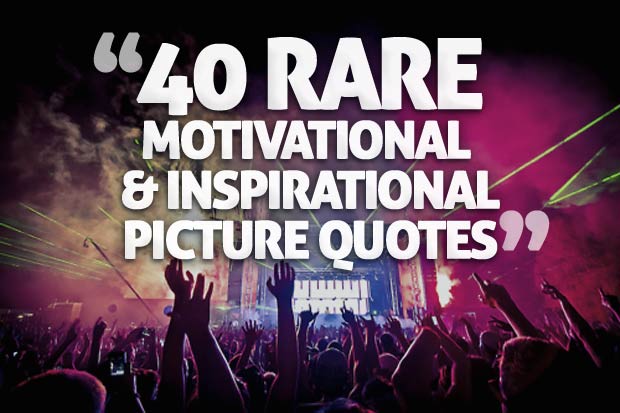Life
Here’s What You Can Do to Embrace Change in the Workplace

Change is at the core of our existence, and yet, we strive to dodge it and remain in our comfort zones by default. While not every shift in our lives is welcome, we need to accept that the root of improvement and personal and professional growth lies in the ability to accept and adapt to change.
Without change, there would be no room for advancement, and evolution in every possible sense would be unlikely. The workplace is just another sphere where a planned change is welcome. However, both companies and individuals need adequate strategies to embrace change in the workplace, both planned and unplanned. And, thus, avoid disruptions in times of uncertainty.
To embrace change, you need to understand it
Perhaps the reasons why people resist change, in general, can be found in its unpredictability and the fear of the unknown. Most of the time, we can’t control the variables, but we can control how we (re)act. Learning how to positively deal with change is vital for every individual and company as a whole.
Not too long ago, the coronavirus outbreak completely stopped us in our tracks. We were and still are trying to redesign our daily lives, including how we operate at work. Constant change is, inevitably becoming a part of our working routine. The best we can do is embrace that change in the workplace and make it work for us.
To understand what’s ahead and diminish the fear of the unknown, it is key to gather as much information as possible. Only through educated decisions, those affected can get much-needed reassurance and comfort. Without the focus on trusted information, these may be difficult to obtain under new circumstances.
“The art of life lies in a constant readjustment to our surroundings.” – Kakuzō
Resistance is futile
This is a popular quote from the Star Trek series, but also a practical way of looking at things. Resistance to change in the workplace isn’t productive and serves nobody. Opening to the change, on the other hand, provides a plethora of new opportunities for improvement. If recognized and developed on time, one of those opportunities may redefine the way we do work or set ourselves apart.
Hence, the first step in embracing the change is acknowledging the possibility that stubborn resilience is not the way. Once we accept this on a personal level, we can easily apply it in the workplace.
With how much effort people will embrace the change partly depends on the management. Only competent leaders can navigate the organization through an uncertain period of change. They do it with the help of strong communication and listening skills, empathy, and intuition. After all, the organization is its people.
Your attitude toward life defines how you embrace change in the workplace
Which words describe a person with a positive attitude toward change? We will often hear that flexible, brave, adaptable, curious, positive, open-minded, patient, creative, strong-willed, enthusiastic people get through everything that life brings with ease. But it is not that simple.
While it may seem that those are exclusive character traits, those virtues can be learned and practiced. One’s outlook on life is based on a determination to survive and thrive, and with it comes the motivation to embrace change.
In other words, if you see the change as an opportunity, it will be an opportunity. If you don’t see it as such, you need to learn how to look. To do so, ask yourself:
- Am I looking only at the negative aspects of change? How many positive aspects can I determine?
- How do I feel about the change? What is the source of these feelings?
- Am I thinking in the long-term? Can this change bring benefits at some point in the future?
If you define a source of any negative feelings toward the change, you will be able to approach the problem on more rational grounds. This is where personal development begins.
Redefine your goals if necessary, but remain focused
Planned changes are best accepted if introduced over time. But sometimes, they can come as a shock, leaving little or no time for preparation. In the latter case, goals set before them may need to be revised, or paths reworked. To more easily embrace change in the workplace, one needs to set a (new) goal, carefully progress in that direction, and regularly reassess the situation. It is the same as walking in the dark, always exploring ahead by making small steps until more light is shed.
There’s no better way to deal with change than focusing on job responsibilities that lead to achieving new performance objectives. The loss of control that often follows in the wake of an unplanned change can be mitigated. Even though they differ from our usual assignments, accomplishing tasks that we’re capable of can still bring about a sense of fulfillment, joy, and comfort.
“Change is the law of life. And those who look only to the past or present are certain to miss the future.” – John F. Kennedy
There is strength in numbers
It is highly likely that you’re not the only one affected by the change. Look around and see how others deal with it and share your thoughts and experiences. The worst you can do is isolate yourself during the time of change when major shifts naturally tend to drive people deep into their comfort zone.
Exposing yourself to others is scary in its own right, but it also opens you to highly useful opinions and helpful practices you may not otherwise be aware of. Being part of a group empowers people, and navigating through the uncertainty the change brings is much easier together.
Life
Imposter Syndrome Is Rooted in Your Past But Here’s How You Can Rewire It
Imposter syndrome is most prevalent in highly successful women

Imposter syndrome is “the persistent inability to believe that one’s success is deserved or has been legitimately achieved as a result of one’s own efforts or skills.” (more…)
Life
The Surprising Mental Health Tool You Probably Haven’t Tried
Through journaling, I arrived at a more balanced perspective, it reinstated my sense of gratitude and led me to accept my disability

In two particularly difficult times in my adult life, my journaling practice is helping me heal emotionally. It has been a vital tool for helping me see the bigger picture and land in a place of gratitude. (more…)
Life
How to Stop Comparing Yourself to Others and Find True Happiness
Comparison is the thief of joy; it robs us of our happiness, self-esteem, and peace of mind

In today’s hyperconnected world, it’s easier than ever to fall into the trap of comparing ourselves to others. Social media platforms like Instagram, Facebook, and LinkedIn constantly bombard us with curated highlights of other people’s lives, making it seem like everyone else is happier, more successful, and more fulfilled than we are. (more…)
Life
Harness the ‘Battery Effect’ to Transform Life’s Tensions into Your Greatest Strength
Recharge your life batteries by shifting your mindset today

I believe our life capacity is determined by the skillsets we develop on this spinning rock we call Earth. By “life capacity,” I mean our ability to embrace and sustain joy. (more…)
-

 Success Advice4 weeks ago
Success Advice4 weeks agoThe One Mindset Shift That Made Me Irreplaceable At Work
-

 Did You Know3 weeks ago
Did You Know3 weeks ago7 Surprising Life Lessons Video Games Taught Me That School Never Did
-

 Success Advice4 weeks ago
Success Advice4 weeks agoHow Playing by the Rules Became the Smartest Business Strategy
-

 Success Advice3 weeks ago
Success Advice3 weeks agoHow to Build Trust, Kill Micromanagement, and Lead a Team That Thrives
-

 Scale Your Business3 weeks ago
Scale Your Business3 weeks agoHow to Build a Workplace People Actually Want to Show Up To
-

 Success Advice3 weeks ago
Success Advice3 weeks agoSuccess Isn’t Sexy: 5 Daily Habits That Actually Work
-

 Scale Your Business3 weeks ago
Scale Your Business3 weeks agoHow Smart Entrepreneurs Cut Financial Chaos in Half with One Simple Switch
-

 Success Advice2 weeks ago
Success Advice2 weeks agoBreaking the Bias: How Females Can Thrive In The Workplace in 2025





























